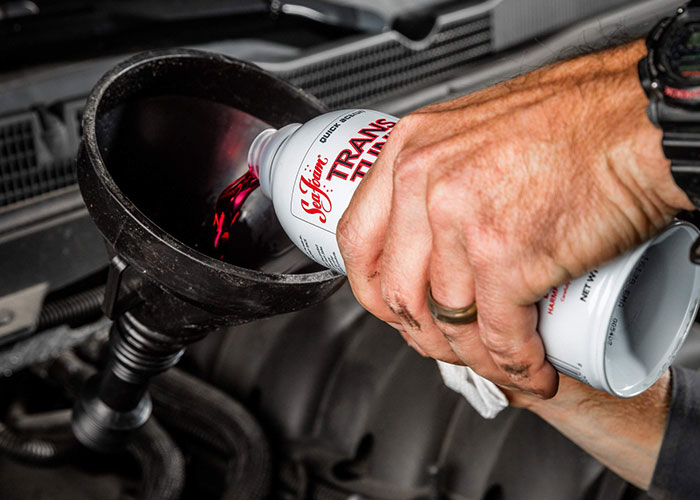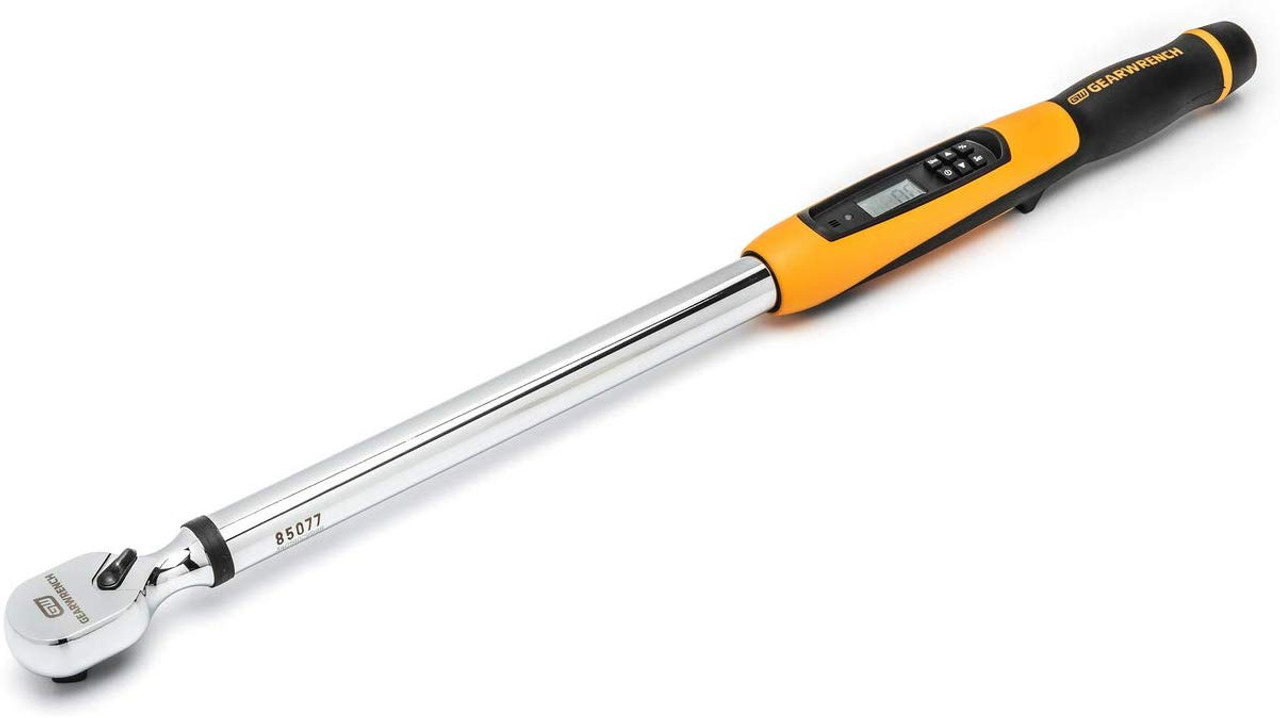How To Change Automatic Transmission Fluid?
3rd Jun 2024
One of the less frequent yet crucial maintenance tasks for any vehicle is the change of automatic transmission fluid. Although the intervals between changes are extended, this doesn't diminish the importance of the task.
Automatic transmission fluid is crucial for the health and efficiency of your vehicle. This vital fluid acts as both a lubricant and a coolant, protecting your transmission from the high heat and friction that occur during operation. Neglecting to replace the fluid within the recommended service interval can lead to significant issues, potentially requiring costly repairs or even a full transmission replacement.
Read on to discover the step-by-step process for changing your automatic transmission fluid, and learn when it's time for a change to ensure your car stays running smoothly.
Understanding Automatic Transmission Fluid
What is Automatic Transmission Fluid (ATF)?
Automatic transmission fluid is a specialized oil optimized for the requirements of automatic gearboxes in vehicles. It serves multiple crucial roles, including lubricating the moving parts, cooling the transmission components, and facilitating smooth gear shifts.
Over time, the chemical properties of automatic transmission fluid degrade due to heat and mechanical stress. This degradation diminishes its effectiveness in protecting and optimizing transmission performance, necessitating regular replacement to maintain your vehicle’s efficiency and longevity.
Why is automatic transmission fluid critical for your vehicle’s transmission?
Automatic transmission fluid is essential for the proper functioning of your vehicle’s transmission because it acts as a lubricant for the moving parts within. This lubrication prevents the components from wearing out prematurely due to friction and heat, thereby extending the life of the transmission.
Additionally, automatic transmission fluid serves as a hydraulic fluid, enabling the transmission to shift gears smoothly and efficiently. Without it, the transmission would not operate properly, leading to rough shifts, increased wear, and potential failure.
Key Functions of Automatic Transmission Fluid:
- Temperature Regulation: The fluid helps maintain the transmission system at an optimal operating temperature by circulating through the transmission cooler
- Seal Maintenance: It keeps the transmission seals flexible, preventing leaks and maintaining the necessary hydraulic pressure inside the transmission system.
- Cleaning Action: Automatic transmission fluid acts as a detergent, capturing and carrying away debris and contaminants that could affect the performance of the transmission.
- Corrosion Prevention: It coats the internal components of the transmission with a protective film that guards against rust and corrosion, further enhancing the longevity of the system.
Signs that you need to change transmission fluid
Recognizing the signs that you need to change automatic transmission fluid is crucial for maintaining your vehicle’s transmission in optimal condition. Here are some clear indicators:
- Transmission Slips: If your vehicle seems to slip between gears, or the engine revs high but the car doesn’t move accordingly, it might be time to change automatic transmission fluid. This fluid is essential for smooth gear transitions.
- Rough Shifts: When shifts between gears become jarring rather than smooth, it's a sign that the automatic transmission fluid may be old or low. Fresh fluid allows for seamless gear engagement.
- Unusual Noises: If you hear whining, buzzing, or humming from the transmission, the automatic transmission fluid could be to blame. These sounds can indicate that the fluid is no longer providing adequate lubrication and protection.
- Leaking Fluid: Spotting a bright red fluid under your vehicle can indicate a leak. Maintaining the correct level of automatic transmission fluid is essential for the transmission to function correctly.
- Burnt Smell: A burnt odor coming from your transmission is a warning that the automatic transmission fluid has degraded beyond its useful life and needs to be replaced to prevent further damage.
How To Change Automatic Transmission Fluid - Step-by-Step DIY Guide
Each vehicle might have specific requirements to change automatic transmission fluid, but the general procedure outlined below will guide you through the process. Follow these steps carefully to perform a successful transmission fluid change.
Step 1: Prepare Your Vehicle
Begin by safely lifting your vehicle. Use a floor jack to raise the vehicle at the manufacturer-recommended lift points, then secure it on jack stands or drive onto automotive ramps. Always engage the parking brake for additional safety.
Step 2: Locate the Transmission Pan
Identify the transmission's oil pan underneath your vehicle. Position a drain pan ($18.19) directly under it to catch the old transmission fluid as it drains. This setup is essential to avoid any mess during the fluid drainage process.
Step 3: Drain the Old Fluid
Check if your transmission pan has a drain bolt. If available, use it to easily drain the old fluid. If not, you'll need to gradually loosen the pan bolts. This will allow the fluid to start draining around the edges of the pan. Be cautious—the fluid might be hot, and loosening the bolts too quickly can cause rapid and messy fluid discharge.
Step 4: Inspect and Clean the Transmission Pan
Once removed, inspect the transmission pan. A magnet inside the pan collects metal filings and debris, a normal byproduct of transmission wear. Clean any metallic "gunk" from the magnet but be alert for any large metal pieces, which could indicate more serious internal wear. Use a degreaser ($5) or parts washer for effective cleaning, and ensure the pan is completely dry before reassembly.
Step 5: Replace the Gasket and Filter
Replace the old transmission pan gasket and the filter. Some vehicles may require the use of RTV sealant instead of a traditional gasket. If this is the case, ensure both mating surfaces are impeccably clean to achieve a good seal. Follow the manufacturer’s guidelines for filter replacement and gasket installation.
Step 6: Reinstall the Transmission Pan
Carefully reinstall the transmission pan and tighten the bolts to the manufacturer's specified torque. This ensures a proper seal and prevents leaks.
Step 7: Refill the Transmission Fluid
Add new transmission fluid ($7.65) through the dipstick tube using a funnel. Some models might have a dedicated fill hole, and others, like some Land Rover vehicles, may require a fluid extractor for filling. Leave about a half-quart less than the capacity to avoid overfilling.
Step 8: Cycle Through Gears
Start your vehicle and shift from drive to reverse, pausing for a few seconds in each gear. Repeat this several times to allow the new fluid to circulate through the transmission.
Step 9: Check and Adjust Fluid Level
After cycling through the gears, check the fluid level using the dipstick. Add the remaining half-quart of fluid if the level is low. Repeat the gear cycling process to ensure the fluid is well distributed.
Step 10: Final Checks and Test Drive
With the vehicle still running, inspect underneath for any signs of leaks. If all looks good, take the vehicle for a test drive to ensure everything operates smoothly and the transmission shifts cleanly.
Tools and Materials Needed To Change Automatic Transmission Fluid
1. Lifting Equipment:
- Floor Jack and Jack Stands or Ramps
To safely elevate your vehicle for easier access to the transmission.
2. Fluid Management Tools:
- Drain Pan
To catch and contain the old fluid as it drains.
- Funnel
To facilitate the addition of new automatic transmission fluid without spills.
3. Mechanical Tools:
- Socket Set
Necessary for removing and tightening bolts on the transmission pan.
- Torque Wrench
Ensures that all bolts are tightened to the manufacturer's specifications.
4. Cleaning Supplies:
- Degreaser or Parts Cleaner
For cleaning the transmission pan and removing debris.
- Shop Rags or Towels
Useful for cleaning up spills and wiping off components during the process.
Common Mistakes in Changing Automatic Transmission Fluid
One of the most frequent errors when attempting to change automatic transmission fluid is overfilling. Adding too much fluid can lead to increased pressure within the transmission system, potentially causing leaks or even damaging seals and other components. It’s crucial to use a precise measurement and adhere strictly to the manufacturer's recommended fluid levels.
Another common mistake is using the incorrect type of automatic transmission fluid or neglecting to replace the transmission filter. Each vehicle requires a specific type of fluid designed to optimize its transmission's performance and protect against wear and tear.
Similarly, failing to replace the transmission filter can impede the cleanliness of the fluid, reducing its effectiveness and leading to premature transmission wear. Always double-check fluid specifications and filter requirements before starting the maintenance process.
FAQs
1. What Is Automatic Transmission Fluid Change Cost?
The cost to change automatic transmission fluid typically ranges from $100 to $250, depending on the vehicle model and the service provider. This price can increase if the transmission filter or other components need replacing. Always consult a trusted mechanic or dealership for the most accurate estimate for your specific vehicle.
2. How Often To Change Transmission Fluid?
The frequency for changing transmission fluid varies by vehicle model and usage but generally falls between every 30,000 to 60,000 miles. Always refer to your vehicle’s owner manual for specific recommendations. Regular maintenance ensures optimal transmission performance and longevity.
Shop Discounted Tools At JB Tools to Change Automatic Transmission Fluid
When planning to change automatic transmission fluid, shop at JB Tools for a comprehensive selection of high-quality, discounted tools. Whether you need a reliable torque wrench, a sturdy drain pan, or a precise funnel, JB Tools offers great deals on these essentials.
JB Tools not only provides affordable options but also ensures that you get professional-grade tools that are up to the task. This makes it easier and more cost-effective for you to maintain your vehicle’s transmission, extending its life and improving its performance.
Remember, using the right tools can prevent common mistakes like overfilling and using the wrong type of fluid, ensuring a correct automatic transmission fluid change every time.









